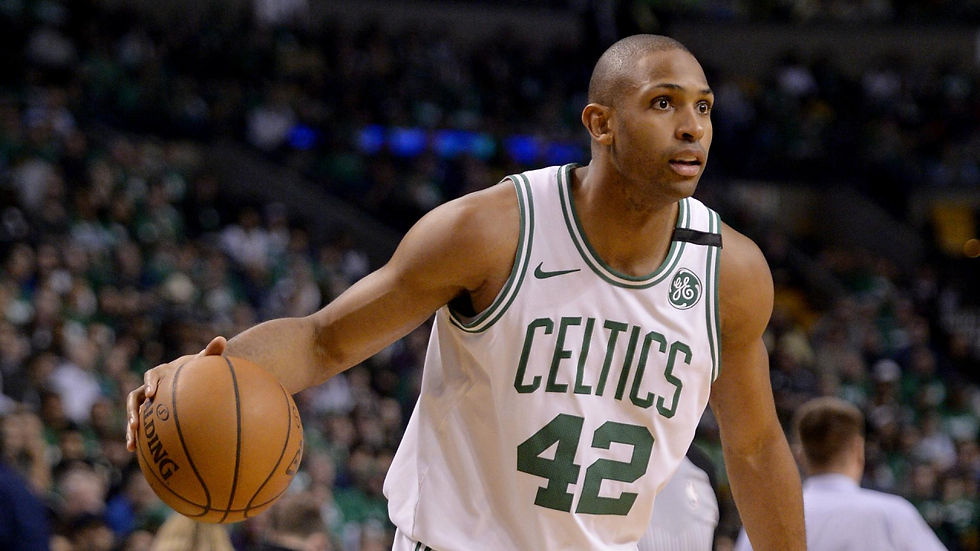The Celtics Should Not Rush Al Horford Back From Injury
- Cameron Tabatabaie
- Dec 13, 2018
- 3 min read

NBA.com
Boston Celtics big man Al Horford has been sidelined for the last few games with patellar tendinitis. The All-Star recently admitted he has been dealing with inflammation in his left knee for the last month.
The Celtics would be wise to be cautious with Horford’s injury. This sort of issue is easy to re-aggravate. At the same time, Horford’s play this season has been inconsistent; a clean bill of health could be just what the Godfather needs.
Let’s explore that fact a bit further:
The injury itself
“I don’t want to have to keep dealing with this and have a question mark game after game,” Horford said. “I just have to listen to the training staff and what the doctors are telling me. I’ve got to buy into that.”
Patellar tendinitis - sometimes called Jumper’s Knee - is caused by stress on the tendon and surrounding muscle connecting the knee with the lower leg muscles.
That Horford is willing to remain patient is important. This sort of ailment can lead to larger tears and lingering pain without proper rest and rehabilitation. Through physical therapy and rest, the 32-year old Horford should be able to make a full recovery.
Horford is a hard worker and a true professional. But it seems to me that he hasn’t looked as spritely this season. Missing a few games with injury will only hinder his conditioning further. Celtics head coach Brad Stevens and his staff, in my opinion, should limit Horford’s playing time as he recovers from injury and slowly plays himself back into shape.
Horford’s struggles
Everyone's a little banged up in the NBA. But perhaps Horford’s injury has been at the root of his disappointing play this season.
Last season, Horford connected on 42.9 percent of his threes, taking about three per contest. This year, he’s taking four per game, but at a 34 percent clip. His assist and rebound numbers are also down considerably.
Horford is finishing more shots at the rim than in years past, but on the whole, his effectiveness in the pick and roll has been greatly diminished. He’s instead opted for a pick and pop behind the three point line, which as we’ve established, has not been a particularly lucrative proposition this year.
It’s his sluggish play that has really been an issue for Horford’s Celtics. The 11-year veteran is a standard-bearer for Boston. His hustle and determination have had an effect on the younger players on the C’s roster. This is to say nothing of his defensive toughness and versatility.
Horford does the little things, and he does them well. He’s a focal point on both sides of the ball for the Celtics. Having him back at full-strength should be imperative for Boston.
Rookie Rob Williams was quite impressive against the Pelicans with Horford on the sidelines. Perhaps the so-called TimeLord, along with Daniel Theis and Aron Baynes, can be a stable force on the Boston frontline for the time being.
Boston should be very careful and cautious in bringing Horford back. This is the approach they took when he suffered a nasty concussion two years ago. Doing so will allow Horford to fully heal his injured knee while he also ramps up to full strength. The party doesn’t start for the Celtics until the postseason, where Horford figures to play a critical role.




Comments